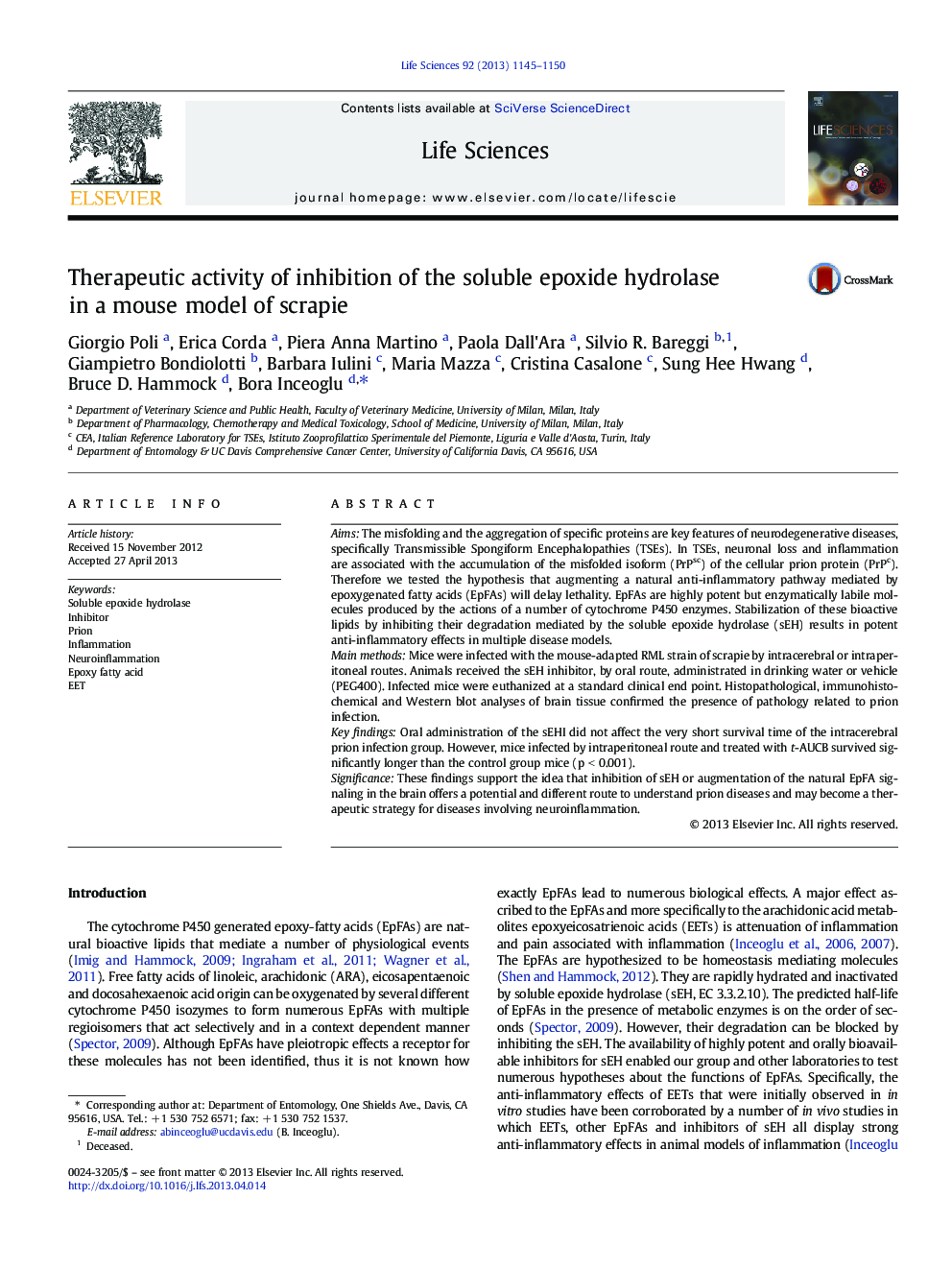| کد مقاله | کد نشریه | سال انتشار | مقاله انگلیسی | نسخه تمام متن |
|---|---|---|---|---|
| 2551587 | 1124754 | 2013 | 6 صفحه PDF | دانلود رایگان |

AimsThe misfolding and the aggregation of specific proteins are key features of neurodegenerative diseases, specifically Transmissible Spongiform Encephalopathies (TSEs). In TSEs, neuronal loss and inflammation are associated with the accumulation of the misfolded isoform (PrPsc) of the cellular prion protein (PrPc). Therefore we tested the hypothesis that augmenting a natural anti-inflammatory pathway mediated by epoxygenated fatty acids (EpFAs) will delay lethality. EpFAs are highly potent but enzymatically labile molecules produced by the actions of a number of cytochrome P450 enzymes. Stabilization of these bioactive lipids by inhibiting their degradation mediated by the soluble epoxide hydrolase (sEH) results in potent anti-inflammatory effects in multiple disease models.Main methodsMice were infected with the mouse-adapted RML strain of scrapie by intracerebral or intraperitoneal routes. Animals received the sEH inhibitor, by oral route, administrated in drinking water or vehicle (PEG400). Infected mice were euthanized at a standard clinical end point. Histopathological, immunohistochemical and Western blot analyses of brain tissue confirmed the presence of pathology related to prion infection.Key findingsOral administration of the sEHI did not affect the very short survival time of the intracerebral prion infection group. However, mice infected by intraperitoneal route and treated with t-AUCB survived significantly longer than the control group mice (p < 0.001).SignificanceThese findings support the idea that inhibition of sEH or augmentation of the natural EpFA signaling in the brain offers a potential and different route to understand prion diseases and may become a therapeutic strategy for diseases involving neuroinflammation.
Journal: Life Sciences - Volume 92, Issue 23, 21 June 2013, Pages 1145–1150